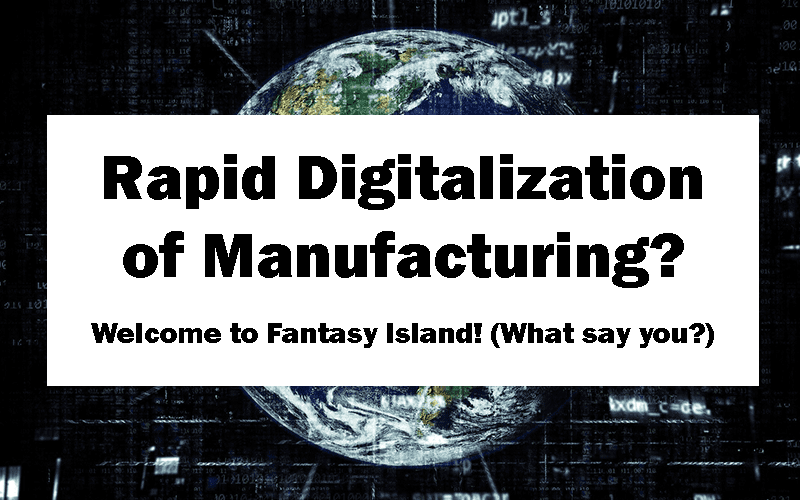I often wonder if I am a square peg in a round hole. I see things differently than many in our industry do and, honestly, it sometimes bothers me.
The other day I was looking at the agenda for some Zoom conference and the abstract for the keynote address said in part: “It’s time that manufacturers adopt rapid digitalization.” That stopped me in my tracks. Here is the CEO of a Fortune 500 company saying something so utterly half-baked and ludicrous that I was dumbfounded. Maybe he sees something I can’t see and that’s the reason he’s CEO of a Fortune 500 monstrous company and I have a tiny company with almost as many chickens as people.
Don’t get me wrong, I believe in digitalization; the objectives are as admirable as they are ambitious. Establishing Ethernet as the sole physical layer. Establishing a single communications standard to support everything from sensor to cloud communications. Decoupling hardware platforms from software applications. Reshaping IT and OT departments. Enabling machine learning and artificial intelligence at the edge, such that data can be processed and responded to quickly. I think that’s all admirable.

Where I part ways with many is that I think it is very difficult – if not near impossible – to disrupt the interlocking ecosystems of the major suppliers, distributors and integrators as well as their customers who have operations designed for compatibility with those ecosystems. Quickly replacing all that with an entirely new industrial ecosystem of new suppliers, new distributors and new integrators adept at deploying new Industry 4.0 tools, processes and methodologies is a fantasy.
Here is what is needed to make this fantasy a reality:
- Manufacturers first would have to come to believe that the benefits of digitalization – substantial savings, profits and efficiencies – are actually achievable. Results are mixed on that right now.
- Manufacturers would have to be willing to reinvent their organizations – restructure and reorganize the responsibilities, roles and processes of both IT and OT.
- The tools for digitalization must be available, well-understood and standardized – the digital transformation cannot happen without the platforms, software and tools supporting it.
- Vendors would have to provide the open hardware systems, virtual containers, and operating systems to power edge devices.
- Software vendors would have to provide the plethora of open application tools to build the applications.
- Certification standards would have to be in place to govern how these open systems interact and exchange I/O and data.
All this is, as they say, “a bridge too far.” The interlocking ecosystems of trade organizations, vendors and user organizations are going to slow the adoption of any technologies and processes that disrupt the prevailing order. There is too much money at stake, the ecosystems are too integrated, and organizations just won’t change fast enough for a real tipping point that leads to massive change. But then again, I am not the CEO of a Fortune 500 company. I’m just some Wisconsin cheesehead saying that the emperor has no clothes. Am I right? You tell me. I wrote a more complete article about this on our website.
Visit our website:
www.logicbus.com




sales@logicbus.com | support@logicbus.com | +1 619 616 7350 | Start conversation

